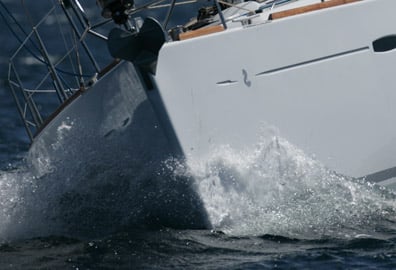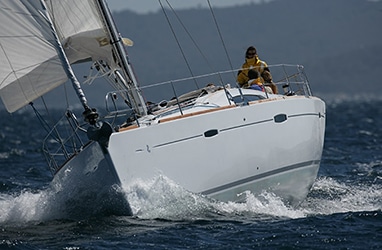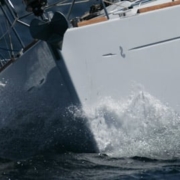Maintaining a Lookout
The Rule
Every vessel shall at all times maintain a proper look-out by sight and hearing as well as by all available means appropriate in the prevailing circumstances and conditions so as to make a full appraisal of the situation and of the risk of collision.
Discussion
This is pretty clear. It means that if you have a collision because you did not see the other vessel (even if you were the Stand-On vessel) you can be deemed to be at fault because you failed this rule.
This is particularly possible in a sailboat situation because the headsail tends to block almost 60 degrees of your visibility to the leeward side of the boat.
If you are on starboard – even though if operating as a sailboat you are a Stand-On boat over other sailboats and many powerboats (not all) you still have the responsibility to maintain a proper lookout in your blind spot. The last thing you want to see looking under the headsail is this:

This sailboat is on a port tack. But you should have seen this coming before an imminent collision.
Note also that the rule says “by all available means”. This would include Radar and AIS, but note that not all vessels will give a good return signal on Radar, in particular, wood and fiberglass boats tend to absorb radar signals rather than reflect them. For your own safety, a Radar Reflector should be mounted high on the mast of your sailing vessel. AIS devices are not installed on all recreational vessels and so reliance on AIS or Radar instead of eyes could be a fatal mistake.
Are you getting all this? You may think you have rights and are stand-on, BUT you have responsibilities operating a vessel. Keep this in mind as you go through the remainder of the course. There is no place on the water (or the courtroom) for ego, stubbornness, and righteousness.






